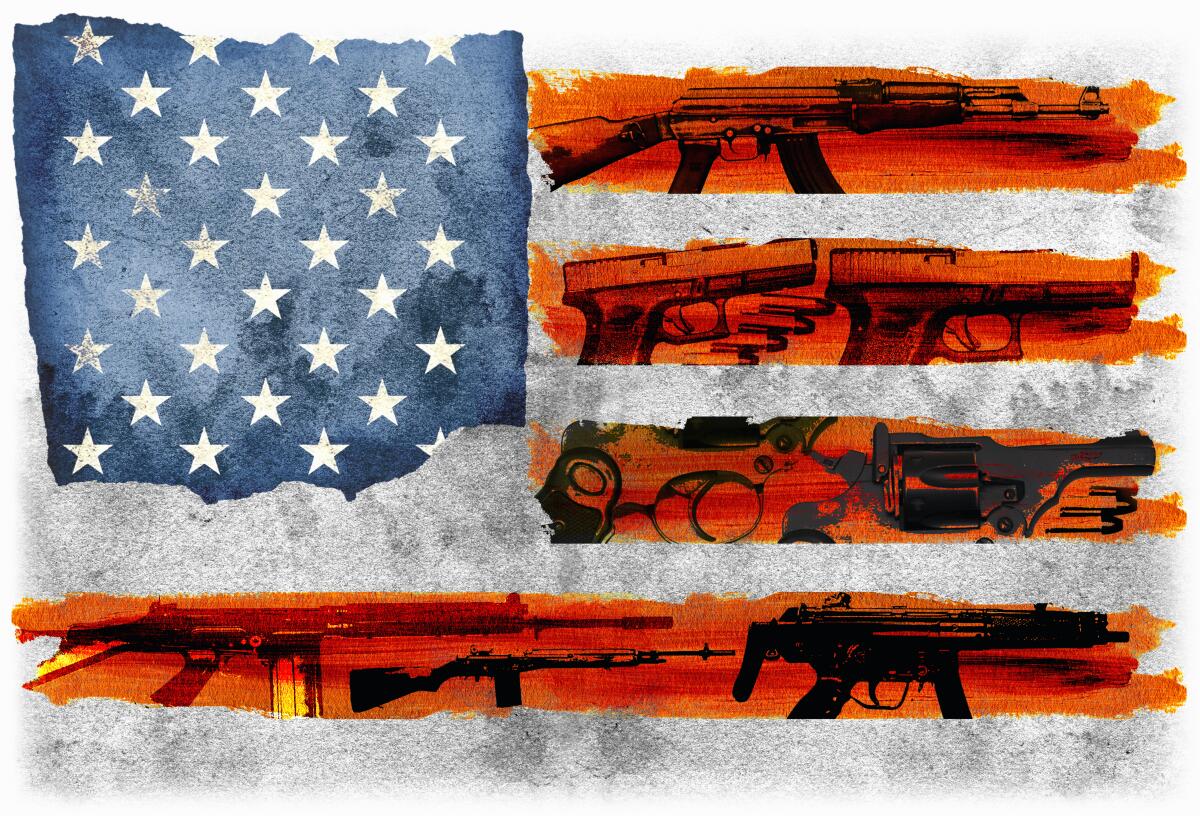Op-Ed: Trump made it easier to export U.S. guns. Biden must reverse these dangerous policies

Last March, the Trump administration implemented regulations to make it easier for U.S. companies to export firearms. Since the new rules took effect, overseas sales of U.S. semiautomatic pistols more than doubled, with potentially devastating consequences. The Biden administration should restore the previous restrictions and take additional measures to prevent U.S.-supplied guns from ending up in the hands of criminal gangs, human rights abusers and terrorists.
The new regulations dramatically decreased scrutiny over U.S. gun exports. They transferred jurisdiction of many types of semiautomatic rifles and pistols, as well as sniper rifles, from the State Department to the Department of Commerce. The rule change resulted in reduced human rights vetting and less rigorous tracking of where U.S. firearms end up, making it easier to sell them to human rights abusers or divert them to third parties, including terrorists and drug cartels.
At the time of the rule change, Sen. Robert Menendez (D-N.J.) pointed out that “semiautomatic firearms and ammunition are uniquely dangerous. They are easily modified, diverted and proliferated, and are the primary means of injury, death and destruction in civil and military conflicts throughout the world.”
They should be subject to “more rigorous export controls and oversight,” not less, he said.
The increase in firearm exports in the last six months of 2020 compared with the last six months of 2019 — the most relevant periods for gauging the effects of the new regulations — has been staggering. Foreign sales of semiautomatic pistols increased by nearly 125% during that time, according to U.S. Census Bureau trade records. In 2020 as a whole, a record number of military rifles and shotguns were exported by the U.S., more than 175,000 overall, according to U.S. tariff and trade data.
The huge surge in gun exports is troubling in its own right. But it is even more concerning when the destination of these firearms is considered.
The countries receiving the most U.S. handgun exports in 2020 were Thailand, about 214,200; Mexico, nearly 55,740; Tunisia, more than 18,730; Brazil, almost 14,060; Saudi Arabia, around 12,640; and the Philippines, 11,110.
Given their repressive conduct and firearms violence committed with impunity, none of these countries should be receiving U.S. guns, much less large increases in these deadly exports.
Thailand’s military dictatorship brutally repressed massive protests last year, leading the democracy think tank Freedom House to change its designation of the status of the nation from “partly free” to “not free.” Near the Mexico-U.S. border, a Mexican police unit armed with U.S. rifles massacred 19 people, just one atrocity among many occasioned in the ongoing drug war. Brazil has one of the highest rates of murder by firearm in the world.
Saudi Arabia and its chief ally, the United Arab Emirates, head a coalition that has waged war since 2015 in Yemen that has killed thousands of civilians and triggered an unprecedented humanitarian crisis. Weapons supplied by the U.S. to the Saudi-led coalition have ended up in the hands of extremist militias, members of Al Qaeda in the Arabian Peninsula and the Houthi opposition.
And in the Philippines, there have been tens of thousands of gun-related killings. They include extrajudicial murders carried out by the military, police and government-affiliated death squads of human rights defenders and critics of the regime of Philippine President Rodrigo Duterte.
The biggest beneficiaries of the export changes have been U.S. gun manufacturers, who pushed vigorously for the Trump reforms, joined by their allies in the National Rifle Assn. Just one firm — Sig Sauer — accounted for more than half of handgun export revenues in 2020. The company was a staunch supporter of President Trump, who appeared at the Sig Sauer plant in New Hampshire in the run-up to his 2016 presidential run and benefited from a $100,000 contribution to GunVote, a political action committee that spent money to help elect Trump president.
But what’s good for Sig Sauer and its ilk is bad for virtually everyone else. The oversize influence of the gun industry should not be allowed to override the need to reduce the human suffering enabled by U.S. firearm exports.
The Biden administration should take immediate steps to rein in these runaway U.S. gun exports. The first step should be restoring State Department jurisdiction over all firearms exports and reinstating advance reporting to Congress of major sales so it can take action to block problematic deals. The administration should also ensure that all end-user certificates for firearms exports correctly identify who are the ultimate buyers of U.S. weapons. Finally, the State Department should be given a clear mandate to make vetting of gun exports a priority, and the resources to do so.
The Trump administration’s dangerous gun-export policies can’t be reversed soon enough.
John Lindsay-Poland coordinates Stop U.S. Guns to Mexico, a project of Global Exchange. William D. Hartung is the director of the Arms and Security Program at the Center for International Policy.
More to Read
A cure for the common opinion
Get thought-provoking perspectives with our weekly newsletter.
You may occasionally receive promotional content from the Los Angeles Times.










